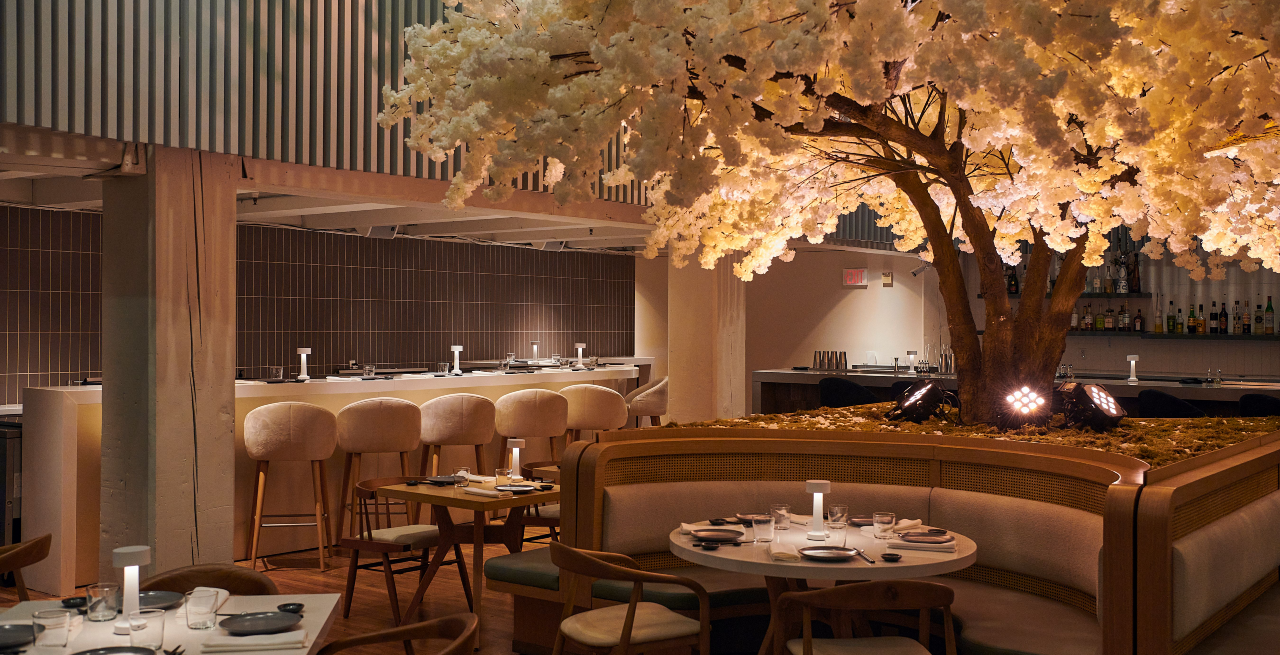Creating an unforgettable dining experience entails more than just serving good food. It’s about creating a symphony of senses and weaving a story that immerses diners in a world of flavor, atmosphere, and emotion. Spatial storytelling emerges as an important component in this attempt, in which a restaurant’s architecture and furniture become characters in a culinary delight story.
Spatial storytelling in the dining environment uses space, design, and layout to immerse diners in a tale, enhancing their overall experience. Imagine walking into a restaurant where every architectural feature tells a tale, from the sweeping curves of the roof to the intricate patterns on the floor. Each piece of restaurant furniture, carefully selected for its aesthetic appeal and ergonomic comfort, adds to the unfolding story. Beyond aesthetics, spatial storytelling elicits emotions, triggers memories, and transports diners to different periods, locations, and cultures. In this essay, we will look at the art of spatial storytelling in dining, including how it shapes narratives, approaches for evoking emotions, and the future of storytelling in restaurant design. Join us on a journey where each location tells a story and every diner becomes a part of it.
Architecture: Guiding the Narrative
Architecture serves as the framework for the dining narrative. The architecture and spatial arrangement of a restaurant can influence how diners move through the room and interact with one another. For example, an open floor plan fosters a sense of community and conviviality, whereas quiet alcoves or private dining sections provide a more hidden and intimate setting.
Iconic architectural designs have the ability to elevate eating experiences to new heights. Consider Frank Gehry’s undulating forms or Zaha Hadid’s futuristic constructions, which each tell a unique tale through their imaginative use of space and materials. Adaptive reuse enhances the narrative by adapting ancient structures or atypical places, giving them new life and significance.
Furniture: Setting the Scene
Restaurant furniture functions as both functional and narrative devices. The choice of seats, tables, and decor can have a considerable impact on a dining room’s atmosphere and mood. Materials, shapes, and colors all play an important role in expressing the desired narrative, whether it’s a rustic farmhouse look or a sleek, modern feel.

Customization and personalization enable restaurants to adjust their narratives to their brand identity and target demographic. These components, ranging from bespoke furniture to one-of-a-kind artworks, provide the eating experience with depth and character. Sustainable furniture design strengthens the story by encouraging environmental awareness and responsibility.
Design Cohesion: Weaving a Seamless Story
Creating a unified narrative necessitates coordinating architectural elements with furniture design. A successful narrative smoothly blends storytelling aspects into all design components, from space arrangement to the smallest decor touches. Designers may guarantee that every component of the eating experience adds to the overall narrative by striking a balance between aesthetic appeal and utilitarian necessity.
Collaborative design techniques are essential in narrative development, bringing together architects, interior designers, and furniture producers to brainstorm ideas and concepts. User-centered design approaches ensure that the narrative speaks to diners on a personal level, building a stronger connection to the environment and the tale it conveys.
Evoking Emotions and Themes Through Spatial Elements
At its foundation, spatial storytelling is about eliciting emotions and themes that diners can identify with. A restaurant’s design can evoke strong emotional responses, such as nostalgia, wonder, or comfort. Cultural and historical tales are frequently expressed through spatial aspects, ranging from material selection to room layout.
Personalization and customization enable restaurants to adjust their narratives to specific themes or concepts. Designers can take customers on a journey with each course by incorporating narrative arcs into dining space arrangements. Seasonality and storytelling go hand in hand, with restaurants tailoring their narratives to shifting circumstances and culinary trends.

Multisensory Design: Engaging All the Senses
Beyond visual aesthetics, spatial storytelling stimulates all of the senses, resulting in a genuinely immersive dining experience. Textures, lighting, and soundscapes are deliberately chosen to complement the story and elicit specific emotions. Integrating aroma and taste into spatial storytelling enhances the dining experience by exciting the senses in unexpected ways.
Emerging technology, such as virtual reality and interactive aspects, create new chances for storytelling creativity. Restaurants may create memorable dining experiences that leave customers with a lasting impression by including these factors in the eating experience. Community participation through sensory-driven narratives promotes connection and belonging, transforming a meal into a shared storytelling experience.
Adaptability and Innovation: Shaping the Future of Spatial Storytelling
As dining patterns and customer tastes change, so should spatial storytelling approaches. To remain relevant, restaurants must adapt to these changes by incorporating technology and innovation into their storylines. Adaptive reuse and flexible locations enable storytelling experimentation, while sustainable methods ensure that the stories we tell are environmentally responsible.
The future of spatial storytelling contains limitless possibilities. From biomimicry and nature-inspired narratives to cultural fusion and globalization, the boundaries of storytelling are always shifting. Designers and restaurateurs who embrace adaptation and creativity can continue to create remarkable dining experiences that will resonate with guests for years to come.
Creating Memorable Dining Experiences With Spatial Storytelling
Spatial storytelling is an effective method for generating memorable dining experiences that involve all of the senses. Designers may transport guests to new realms and elicit powerful emotions by combining architecture and restaurant furniture to create immersive narratives. Every element, from the space layout to the smallest decor touches, contributes significantly to the dining narrative.
As we look ahead, the possibilities for spatial narrative are endless. By embracing adaptability and creativity, designers and restaurateurs may continue to push the limits of narrative design, producing experiences that excite and inspire customers. By collaborating to create cohesive storylines that appeal to consumers, we can ensure that the art of spatial storytelling remains central to the eating experience for future generations.


